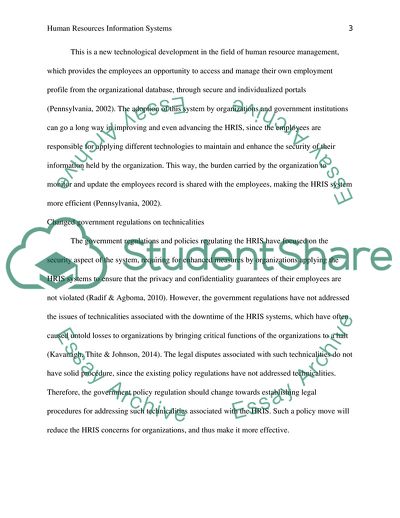Human Resources Information Systems Assignment Example | Topics and Well Written Essays - 1000 words. https://studentshare.org/human-resources/1843117-human-resources-information-systems
Human Resources Information Systems Assignment Example | Topics and Well Written Essays - 1000 Words. https://studentshare.org/human-resources/1843117-human-resources-information-systems.


